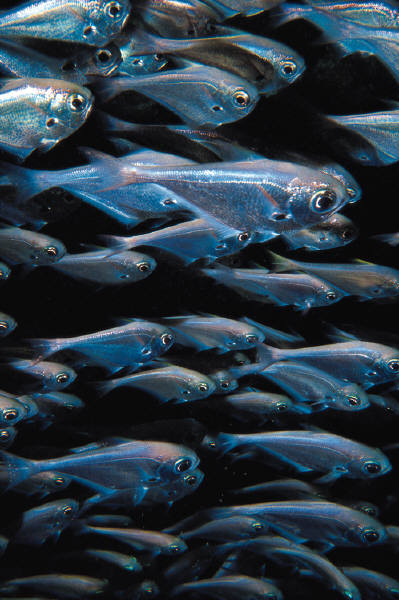During the previous century, the environment has been all but “destroyed” by human actions. The consequences of the industrial revolution and the worldwide expansion of the populations in Europe and North America have been visible for a long time. On several places, there is not much left of the original nature. Because of this, many animal and plant species completely disappeared. During the last decade, the environment of the whole world is being destroyed. Areas that have been inviolable for many years now seem very vulnerable.
Also in the areas where the livebearers and Goodeidae come from the influence of Man is noticed. The huge expansions of people and the herewith combined needs for water have made especially species that live in a small area have a great chance to disappear completely.
Have a look...
[ <-- click here ]
at the visitors' book!
The family of the Goodeidae has a small habitat in the West of Central Mexico and many species live in small flushes. Because of the expansion of the population and the great water capacity needed for agriculture and industries, the chance that such fishes disappear is enormous. Some of these have disappeared completely in nature and at best survive in aquaria. The best-known example of this is Skiffia francesae, Kingston, 1978. This species has not been seen in the wild for over 25 years. It only lives in aquaria. Fortunately, this species, after being bred in aquaria for so many years, seems easily kept in aquaria. Occasionally specimens with a short backbone or swimming deficiencies are born, but with good selection, this need not cause problems to keep this species. During the last few years there have been many aquarists who want to keep this species and there is enough breeding material available to supply them with a group of fishes.
For Zoogeneticus tequila, a group of aquarium lovers works together in such a way to guarantee the continuance of this species. Through good bookkeeping and exchanging fishes regularly they hope to keep this species for the future.
Although the situation for the above mentioned species can be seen as extreme, investigations in the Mexican biotopes have proved that the area of many species has decreased and in some cases was reduced to just one habitat. This holds good for example for Hubbsina turneri and Girardinichthys multiradiatus.

In addition, among livebearing tooth carps there are species that have already died out or are threatened by extinction. Especially the species in the North of Mexico are endangered. The three northern platy-species only live in some isolated springs, so that their survival is not sure anymore.
The species of the genus Gambusia who live in the North of Mexico and in the South West of the USA are sometimes thrown back on extremely small biotopes, because of the great amounts of water needed for agriculture. In some cases, the water consumption had so far reaching consequences that the species have already become extinct (Gambusia amistadensis). In other cases, it was touch and go. Of the species Gambusia gaigei only four specimens in a laboratory remained. Of those four fishes one died and now all living Gambusia gaigeis are descendents of those three fishes. In the meantime, a spring is created at Bosquilles national park where this species is kept. Furthermore, there are populations kept in aquariums so that the risk is spread somewhat. This small Gambusia is not so easy to keep anymore and requires a high standard of water quality and nutrition.
The above-mentioned examples do not give a complete overview of the livebearers and Goodeidae of which the keeping can contribute to the survival of certain species. Fortunately, more and more fish keepers and institutes see the importance of this and are prepared to keep and breed species for a longer time.
For some species (Zoogeneticus tequila and Gambusia gaigei) groups of aquarists cooperate to keep and breed these species. It would be better if more species would be kept in this way.
That the importance of keeping the species is also noticed more and more often in countries like Mexico is proved by the project of the university of Morelia. With the help of aquarists’ organizations from all over the world, nearly all species of Goodeidae are kept and bred. The maintenance itself as well as providing information of these endemic fishes are an important part of this project.
Kees de Jong
Link to Morelia Site
